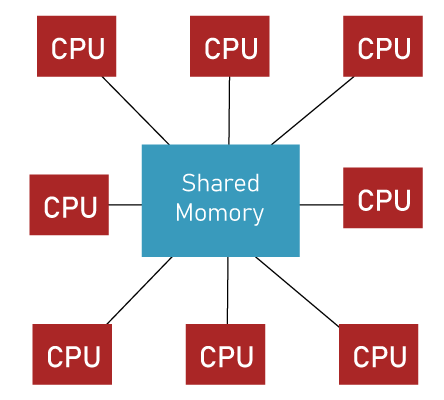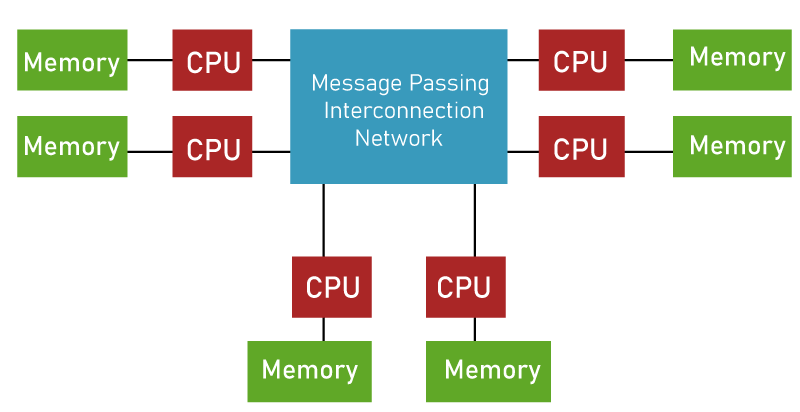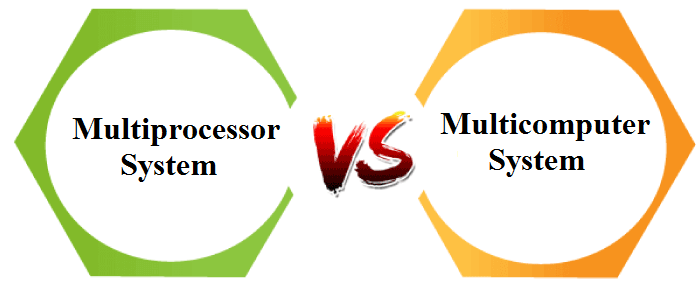Difference between Multiprocessor and Multicomputer SystemMultiprocessors and multicomputer systems are forms of parallel computers. The main distinction between these systems is that a multiprocessor is a single computer that contains numerous interconnected processors with standard computing resources like memory and Input/output devices. On the other hand, the multicomputer is built by linking numerous autonomous computers via a network, and every autonomous system has its computational power. In this article, you will learn about the difference between Multiprocessor and a Multicomputer. But before discussing the differences, you must know about Multiprocessors and Multicomputer with their advantages and disadvantages. What is Multiprocessor?A multiprocessor is a system that contains multiple central processing units (CPUs) that share full access to a common random access memory (RAM). The main aim of using a multiprocessor is to enhance the speed of system execution, with other goals including app matching and fault tolerance. Multiple processors may execute various tasks simultaneously. If one CPU has failed, it doesn't affect the tasks of the other processors. As a result, a multiprocessor is more dependable. 
Multiprocessors are classified into two types: shared memory multiprocessors and distributed memory multiprocessors. Shared Memory Multiprocessors In shared memory multiprocessors, the common memory is shared by all CPUs, and the processors may communicate with each other by reading and writing to memory. It is also known as the symmetric multiprocessor system. Distributed Memory Multiprocessor In a distributed memory multiprocessor, every processor has its private memory. If the requested data is not available in private memory, the processor utilizes the bus to communicate with the main memory or other processors. A multiprocessor offers faster computing, higher performance, and greater fault tolerance. Models in MultiprocessorThere are mainly three models in a multiprocessor. These are as follows: 1. UMA (Uniform Memory Access) This model distributes physical memory uniformly among the processors, with each processor having an equal access time to all memory words. 2. NUMA (Non-Uniform Memory Access) model It is a shared memory multiprocessor only in that the access time varies depending on the position of the memory word. The NUMA model comes in two variants. One model physically distributes shared memory to all Processing units, whereas the other model employs shared memory in a multiprocessor system. 3. COMA (Cache-Only Memory Architecture) model This model is made up of a multiprocessor and cache memory combination. It converts distributed memory into the cache memory. It doesn't utilize the memory hierarchy, and global address space is created by aggregating all caches. Advantages and Disadvantages of MultiprocessorThere are various advantages and disadvantages of the multiprocessor system. Some advantages and disadvantages of the multiprocessor system are as follows: Advantages
Disadvantages
What is a Multicomputer?A multicomputer is a system that contains numerous processors that work together to solve an issue. Every processor has its memory, which is solely accessible by that processor. An interconnection network allows the processors to communicate with one another. 
As the multicomputer can transmit messages between the processors, the task may be categorized among the CPUs to be completed. Therefore, the multicomputer may be utilized for distributed computation. A multicomputer is easier and less expensive to develop than a multiprocessor. On the other hand, programming a multicomputer is complex. The multicomputer is the foundation of the NORMA model. NORMA is an abbreviation for "No-Remote Memory Access". It describes how numerous autonomous nodes with a processor, local memory, linked disks, and Input/Output peripherals communicate via messages rather than direct communication. Multicomputer GenerationsMulticomputer has gone via a number of unique technological stages that may be traced back through their various generations, ultimately aiming for huge parallel processing. First generation The first generation (1983-1987) was built with multiple microprocessors, popular static interconnection networks (hypercube-based), and software-controlled message-passing mechanisms. As a result, it provides a cost/performance ratio that eventually puts a strong challenge against the most popular versatile mainframe machines of those days from multinational giants such as HP, DEC, IBM, NCR, and others. Second Generation The second generation of multicomputer (1988-1992) replaced the slower software-controlled message-passing mechanism with faster microprocessors, such as RISC processors, mesh topology, enhanced interconnection networks, and hardware-supported routing algorithms (wormhole routing). As a result, global communication latency was reduced to less than 5 ps from 6000 ps, and local communication latency was reduced to 5 ps from 2000 ps, with a speed increase of about 10 times on average over its predecessors. However, this generation provided medium-grain parallelism at the processing level of tasks, processes, and subroutines to balance this computational resolution with the current communication latency to achieve adequate synchronization. Third generation The third generation (1993-1997) of a multicomputer is a fine-grained multicomputer with a bigger number of more advanced processors, quicker routing channels, and a medium size of private memory to every CPU, aiming for huge parallelism by studying both instruction-level parallelism and data parallelism. It offers adequate language and run-time software environment support, as has the usage of an optimizing compiler, which may automatically detect parallelism and translate source code to an acceptable parallel form that the run-time system may recognize during execution. Features of MulticomputerThere are various features of a multicomputer. Some features of multicomputer are as follows:
Key differences between Multiprocessor and Multicomputer Systems
There are various key differences between Multiprocessor and Multicomputer System. Some of the key differences between the Multiprocessor and Multicomputer systems are as follows:
Head-to-head comparison between Multiprocessor and Multicomputer SystemsHere, you will learn the head-to-head comparisons between the Multiprocessor and Multicomputer systems. The main differences between the Multiprocessor and Multicomputer systems are as follows:
ConclusionThe multicomputer and multiprocessor are both parallel computer types, and the multiprocessor contains multiple processing components that use shared memory. In contrast, in a multicomputer, multiple autonomous computers are linked together, and each has its own distributed memory.
Next TopicDifference between
|
 For Videos Join Our Youtube Channel: Join Now
For Videos Join Our Youtube Channel: Join Now
Feedback
- Send your Feedback to [email protected]
Help Others, Please Share









